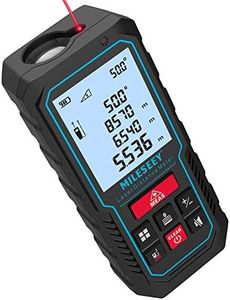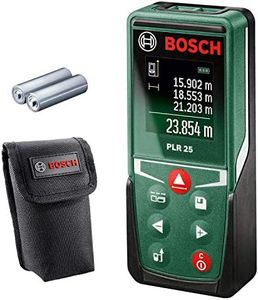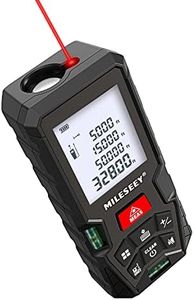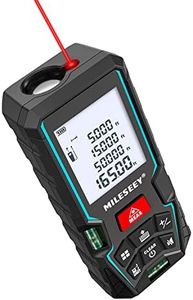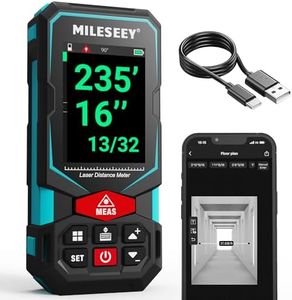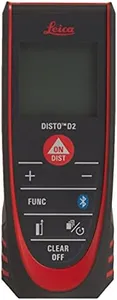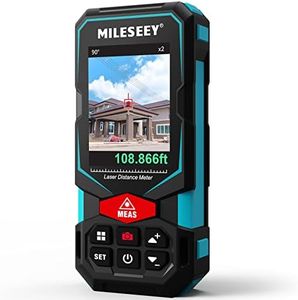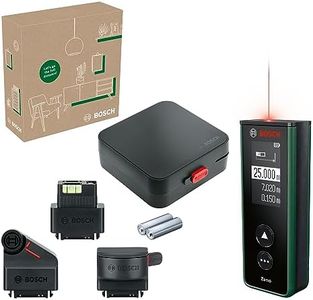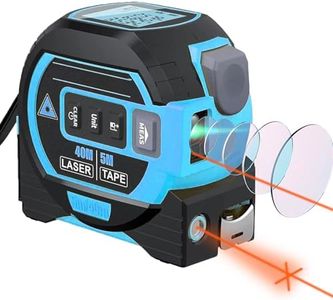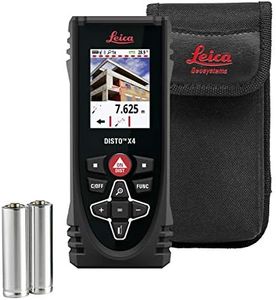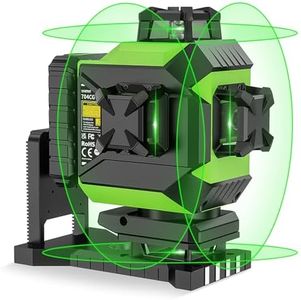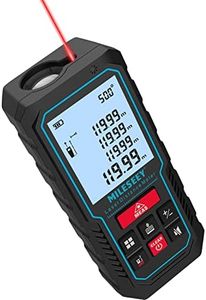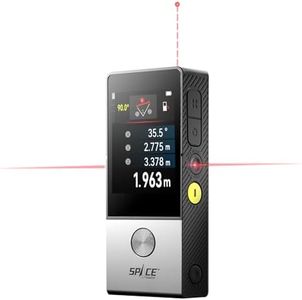We Use CookiesWe use cookies to enhance the security, performance,
functionality and for analytical and promotional activities. By continuing to browse this site you
are agreeing to our privacy policy
10 Best Laser Measures
From leading brands and best sellers available on the web.Buying Guide for the Best Laser Measures
Laser measures are handy tools for quickly and accurately measuring distances, especially in construction, home renovation, or interior design projects. They save time compared to traditional tape measures and often offer additional functions such as calculating area or volume. The right laser measure will depend on how you plan to use it—simple home tasks might require basic models, while professional use demands more features and greater durability. Understanding the main specifications will help you choose a device that matches your needs and expectations.Measurement RangeMeasurement range refers to how far the laser measure can accurately record distances. This is usually expressed in meters or feet. For basic indoor use like measuring rooms or furniture spacing, a shorter range (up to about 20-30 meters) will usually suffice. If you plan to use it outdoors or in large spaces like warehouses, a longer range (50 meters or more) offers more flexibility. Think about the typical spaces you'll be measuring and opt for a device with enough range to handle your largest expected measurement.
AccuracyAccuracy tells you how precise the readings from the laser measure will be, usually as a small value like ±1.5 mm. The smaller this number, the more precise your measurements. For most household projects, a standard accuracy will be sufficient, but for technical or professional jobs, or anywhere a millimeter’s difference matters, select a laser measure with the highest accuracy you can find. Your need for precision will help determine the right level of accuracy.
Measurement FunctionsMany laser measures can do more than just measure distance—they may be able to calculate area, volume, or even indirect measurements using the Pythagorean theorem. Some advanced models can add or subtract measurements and store previous results. If all you need is simple distance measurement, you don’t need to worry about these extras. But if you often calculate room sizes or work with more complex data, look for a device with these helpful features.
Display Type and VisibilityThis refers to the kind of screen the laser measure has and how easy it is to read, especially in bright light or low-light conditions. Some devices have large, backlit displays for better visibility. If you frequently work outdoors or in dim areas, a larger, backlit display will make reading measurements much easier. For mostly indoor and well-lit use, standard screens are typically sufficient.
Durability and Protection RatingLaser measures are sometimes exposed to dust, splashes of water, or accidental drops, especially on job sites. Many models come with an IP (Ingress Protection) rating that tells you how resistant they are to dust and water. If you expect to use the device outside or on construction sites, or if you’re prone to dropping tools, finding a product with a better protection rating or rugged casing will make it last longer.
Battery Life and Power SourceLaser measures use batteries, which can be either regular replaceable ones or rechargeable systems. Longer battery life is useful for extended measurement sessions or professional use, while rechargeable options can save money and hassle over time. If you’ll use it frequently or for long periods, prioritize models with strong battery performance. For occasional use, standard batteries may be more convenient.
Size and WeightThe size and weight of the device affect how portable and comfortable it is to carry and use. Smaller, lighter models fit easily in a pocket or toolbelt and are easy to handle, making them perfect for quick, everyday measurements. Larger units may have more features but can be bulkier. Choose a size that feels convenient and fits your working style.
